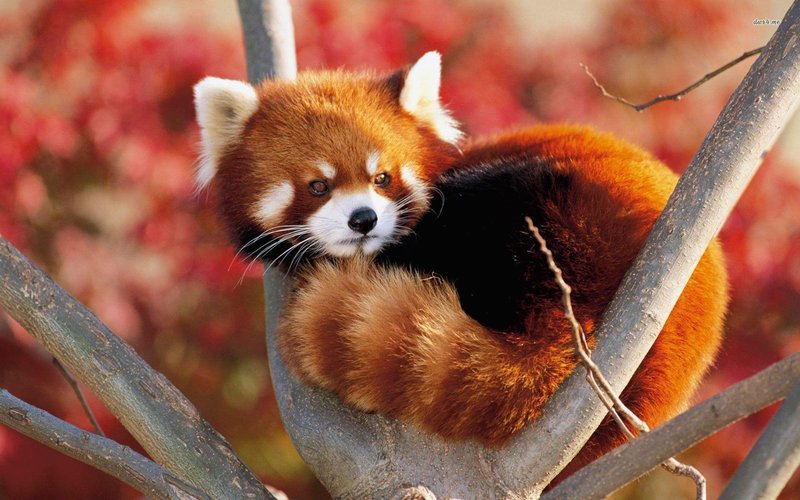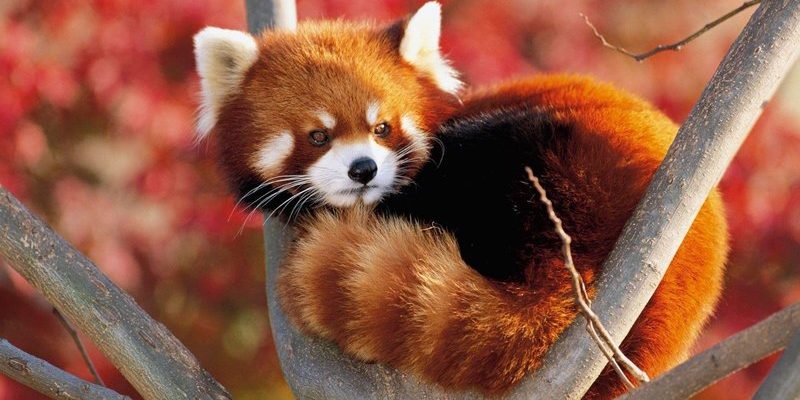
Red pandas are often mixed up with raccoons and even bears due to their names and appearances, leading to some pretty funny and inaccurate assumptions. Let’s dive into some of these common myths and clear the air about what makes the red panda so unique.
Myth 1: Red Pandas Are Related to Raccoons
One of the most common misconceptions is that red pandas are closely related to raccoons. Honestly, it’s an easy mistake to make. Both animals have similar facial markings and a love for climbing trees. However, red pandas belong to their own family called Ailuridae. This is a bit like thinking that a dog and a wolf are the same just because they share a common ancestor.
The closest relatives of red pandas are actually weasels and otters. Their lineage diverged around 25 million years ago, which means they’ve been carving out their own niche for quite some time! So while raccoons and red pandas may share some physical characteristics, they are as different as apples and oranges in terms of their evolutionary background.
Myth 2: Red Pandas Are a Type of Bear
You might have heard someone call a red panda a “fire fox” or a “bear cat,” but here’s the thing: they are not bears at all. This misconception likely comes from their name and some similarities in appearance. Believe it or not, red pandas are more closely related to the giant panda, but they have their own distinct characteristics and behaviors.
For instance, while giant pandas primarily eat bamboo, red pandas enjoy a more varied diet that includes fruits, acorns, and even small insects. Their unique digestive system is designed to handle this diverse range of food. So, next time you hear someone refer to them as bears, you can confidently correct them and share a fun fact!
Myth 3: Red Pandas and Giant Pandas Are the Same
With “panda” in both their names, it’s no wonder people might think that red pandas and giant pandas are the same. But let me explain: while both animals share a love for bamboo, they are quite different. Giant pandas are much larger, weighing anywhere from 220 to 330 pounds, while red pandas typically weigh between 8 to 14 pounds.
In addition to size, their habitats also differ. Giant pandas live in the mountainous regions of China, primarily in bamboo forests. Red pandas, on the other hand, prefer the temperate forests of the Himalayan region, including parts of Nepal, India, Bhutan, and Myanmar. Their lifestyles, diets, and even the way they communicate are distinct. Understanding these differences helps us appreciate the diversity of our furry friends!
Myth 4: Red Pandas Are Strictly Nocturnal
You might picture red pandas as creatures of the night, sneaking around in the dark like raccoons. While they are indeed crepuscular, meaning they are most active around dawn and dusk, they are not strictly nocturnal. They can be seen playing and foraging for food during the day as well, especially when they feel safe.
This behavior can vary depending on their habitat and human presence. In areas with more humans, red pandas might engage in more nocturnal activities to avoid interactions. But in the wild, they often enjoy the calm of early morning or the cool of the evening to explore and search for food. So don’t be surprised if you catch a red panda out and about during the day!
Myth 5: Red Pandas Are Just Cute and Clumsy
Yes, red pandas are incredibly cute, but they aren’t just fluff and giggles! These creatures possess special adaptations that allow them to thrive in their environment. For example, their semi-retractable claws help them climb expertly and grasp branches as they forage for food high in the trees. It’s like having the best tools for a job that requires finesse and agility.
Red pandas also have a keen sense of smell and a good memory, which helps them locate food and navigate their territories. While they may seem clumsy at times—especially when playing with each other—their bodies are designed for life in the treetops. So, while cuteness is a significant part of their appeal, beneath that fluffy exterior lies a remarkable animal that’s well adapted to its environment.
The Importance of Understanding Red Pandas
Now that we’ve busted some of these myths, it’s essential to understand why they matter. Red pandas are classified as vulnerable due to habitat loss and poaching. Many people may not realize this simply because they only see the adorable side of these creatures. By spreading accurate information and debunking myths, we can help raise awareness and protect them.
Conservation efforts are crucial. Zoos and wildlife organizations are working tirelessly to ensure the survival of red pandas in the wild. Educating others about these animals and their needs can inspire more people to get involved in conservation efforts. The more we understand and appreciate red pandas, the more likely we are to support their protection.
Red pandas are truly unique animals, bursting with personality and charm, despite the many myths surrounding them. By separating fact from fiction, we gain a better appreciation for their role in our ecosystem and the challenges they face.
So, the next time you come across a cute picture of a red panda—or a friend who thinks they’re just cuddly raccoons—share what you’ve learned. Knowledge is power, and it can lead to a greater understanding and support for these delightful creatures. Remember, the truth is always cuter than the myths!

